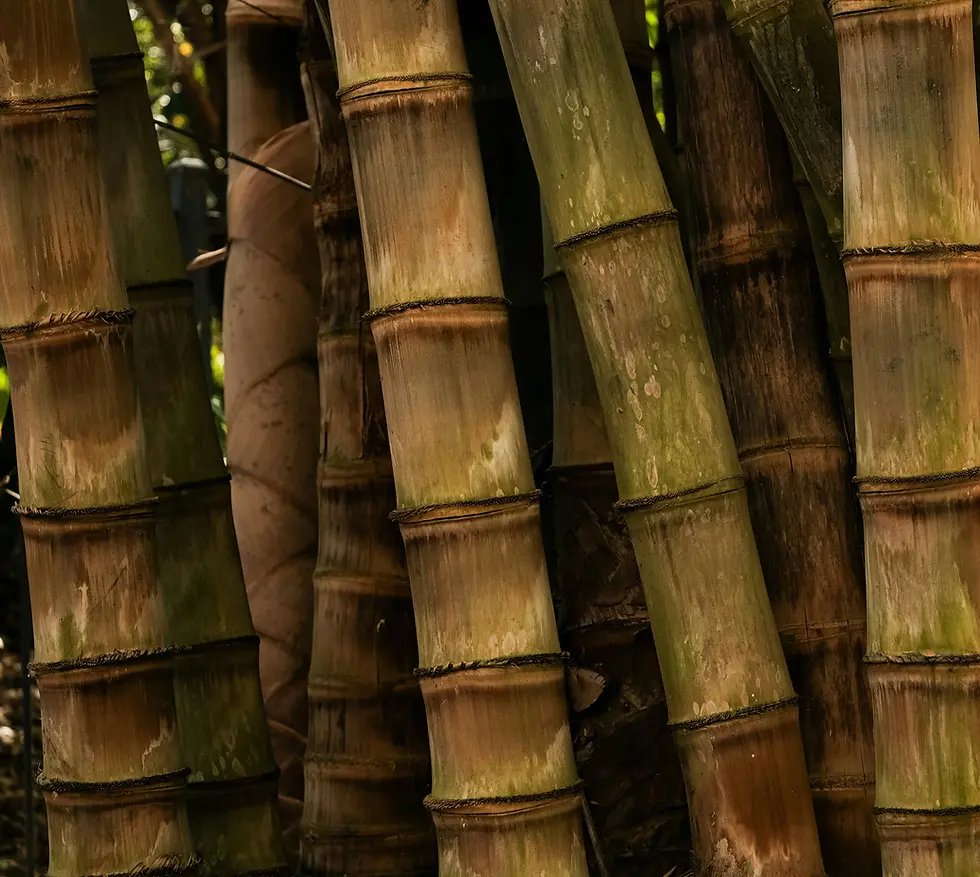
LAND
Bamboo: A Rapidly Growing Solution for Landslide Prevention and Oxygen Production, but with Invasive Challenges
Bamboo: A Rapidly Growing Solution for Landslide Prevention and Oxygen Production, but with Invasive Challenges

Bamboo, one of the fastest-growing plants on Earth, plays a crucial role in environmental conservation, particularly in preventing landslides and improving air quality through high oxygen production. Its versatility extends to various industries, from construction to textiles. However, its rapid spread and strong root system can pose challenges, including invasiveness and potential damage to infrastructure.
Environmental Benefits of Bamboo
1. Landslide Prevention and Soil Stabilization
Bamboo's extensive root and rhizome system help stabilize soil, making it an effective natural barrier against erosion and landslides. Its ability to bind loose soil is particularly beneficial on steep slopes, riverbanks, and deforested areas, reducing the risk of land degradation. Studies have shown that bamboo plantations significantly improve soil retention and reduce water runoff. (Guadua Bamboo)
2. Oxygen Production and Carbon Sequestration
Bamboo is highly efficient at producing oxygen and absorbing carbon dioxide. Research indicates that a bamboo grove releases 35% more oxygen than an equivalent stand of trees, contributing to better air quality and playing a role in climate change mitigation. Additionally, bamboo sequesters large amounts of carbon, making it an effective tool for reducing atmospheric CO₂ levels. (One Earth)
3. Rapid Growth and Versatile Applications
One of bamboo’s most remarkable features is its rapid growth—some species can grow up to 91 cm (36 inches) in a single day. This makes it a highly sustainable resource for various industries, including:
Construction: Used for scaffolding, flooring, and furniture.
Textiles: Bamboo fibers are processed into fabric for clothing.
Paper Production: An alternative to traditional tree-based paper.
Food and Medicine: Bamboo shoots are consumed in many cultures, while extracts are used in traditional medicine.
Its ability to regenerate quickly after harvesting makes it a renewable and eco-friendly material.
Challenges of Bamboo Cultivation
1. Invasiveness
While bamboo offers many benefits, certain species, especially running bamboos, are highly invasive. Their underground rhizomes spread aggressively, making it difficult to control their growth. If not properly managed, bamboo can outcompete native vegetation and become an ecological concern. (University of Maryland Extension)
2. Impact on Infrastructure
The strong root system of bamboo can cause structural damage by infiltrating foundations, sidewalks, and drainage systems. Unchecked growth near urban areas may result in costly repairs for homeowners and municipalities. (Ascent Yard Care)
Bamboo is an invaluable resource for environmental sustainability, offering solutions for landslide prevention, oxygen production, and carbon sequestration while serving as a versatile material across industries. However, its rapid growth and invasive nature require careful management to prevent ecological and structural challenges. By implementing proper containment strategies, bamboo can be utilized effectively as both an environmental protector and a sustainable resource for the future.
References
Guadua Bamboo. (n.d.). Bamboo prevents soil erosion and restores degraded land. Guadua Bamboo
One Earth. (n.d.). The wonders of bamboo groves. One Earth
University of Maryland Extension. (n.d.). Containing and removing bamboo. University of Maryland Extension
Ascent Yard Care. (n.d.). How invasive bamboo multiplies and destroys the environment. Ascent Yard Care

